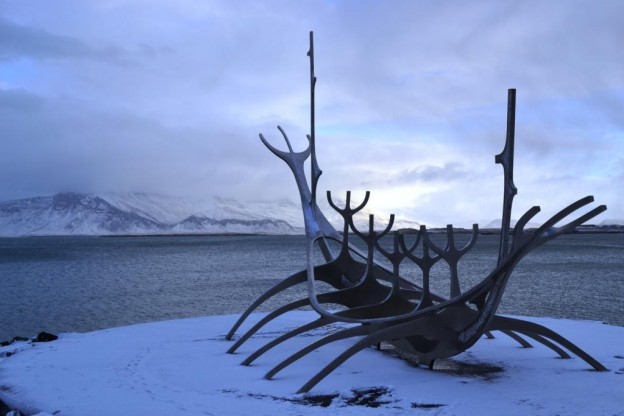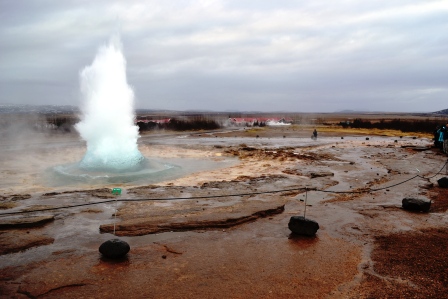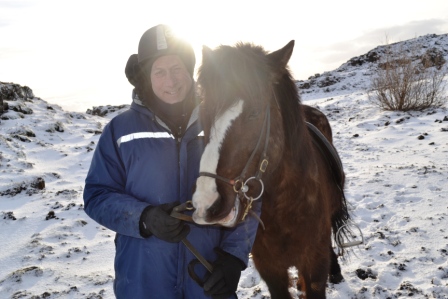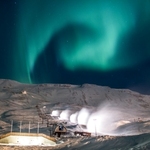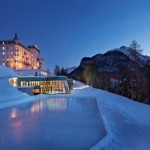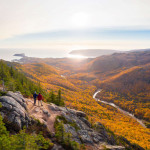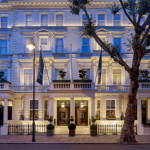Iceland sits atop the world like an Elvin queen; her stunning beauty there for all to see, but beware of the deadly temper awaiting underneath that veneer, boiling away below the surface, bursting out fire and brimstone if her day’s not turning out too good.
Fortunately for me she was in a good mood for my visit, although you might call the occasional biting gale-force wind a teasing taste of what lies in wait if she gets in a seriously bad mood.
There are more examples of the deadly power lying below your feet outside of the capital Reykjavik, up in the scarred volcanic landscape of the Thingvellir National Park. Thingvellir is revered by Icelanders through its roots as the site of the first Icelandic general assembly from 900 ad to the late 1700’s.
This was also once a place of terrible destruction, where nature fought a mighty battle; the great rift right at the junction of the the north Atlantic and Eurasian plates. The scars of battle are all around; mighty volcanoes, glaciers, craggy lava fields, boiling hot geysers, the huge waves of water that once flooded the land here tossed huge boulders around like pebbles. The park is exceptional; the rift valley still moving apart at a rate of two centimetres a year is a wondrous place where depending on the time of day and how the light catches it, can cast a different facade each time you visit.
Geyser on the other hand is something more regulated. Here the steam coming out of the holes in the earth’s crust give the area a mysterious shroud not unlike a smoky battleground, the murky shapes of people appearing out of the mist an eerie sight. But here, every few minutes, old Geyser shoots up boiling water some 100 feet or so, the way it’s been doing so for millennia. And Iceland is still changing. Each seismic shift or new volcanic eruption breaches new steam holes in the landscape, the hot water in such abundance it’s harnessed to heat the homes of most of the population. They call it geothermal heating but I call it hot water on tap for your house at rates so cheap it’s almost a giveaway.
The geothermal water is best experienced first hand at The Blue Lagoon, a vast lake of the hot stuff in the foothills of the lava fields in-between Reykjavik and the international airport at Keflavik. Here you can bathe in six million litres of geothermal seawater and spread white Silica mud over your body to give yourself a smooth complexion and energise and exfoliate your skin. Part hotel and part spa, the Blue Lagoon is a must see but I’d advise you to take along your own towel and robe to avoid paying a fee to rent some.
Icelandic horses are really beautiful creatures. Short and stocky with gorgeous long hairy manes, these beasts, directly descended from the Viking originals, are built for working. They are immensely strong and lightening quick. Unlike other horses who walk, trot and gallop, these guys have a fourth gear called a flying pace which is a perfect description. I took a memorable two hour Icelandic horseback tour with Ishestar Riding which caters for experienced riders and more importantly will provide first timers with a memorable couple of hours walk and trot around the stunning frozen lava fields.
Of course, one of the main attractions of Iceland is the opportunity to experience the mysterious Northern Lights, one of the magical natural wonders of the night sky in the polar regions of the world. February is considered to be one of the best times to see them here, but remember a clear night is a must and even then, you’re never guaranteed to see them. Nature can be so cruel!
Iceland Excursions run nightly tours and they will ferry you around the countryside seeking out the best places to try and see those elusive lights. Fortunately, if you don’t manage to get a glimpse, you can always rebook for another night at no extra charge.
The Elvin Queen is a sight to behold any time of the year, but during winter just be prepared for everything she might throw at you if she’s feeling moody!

